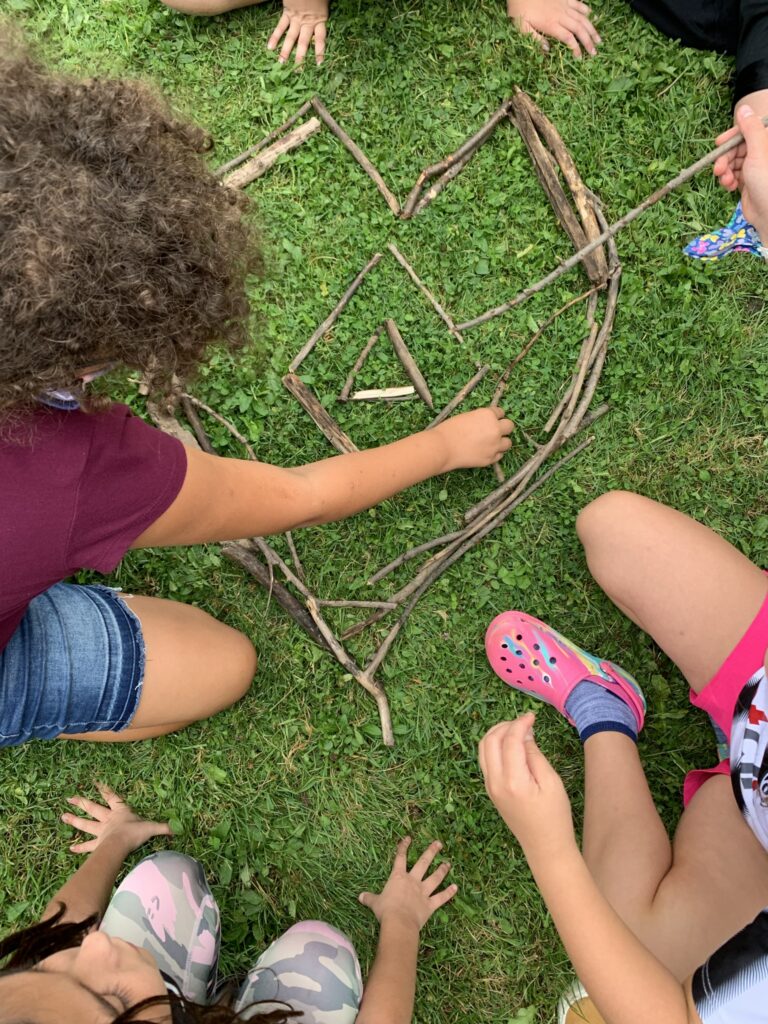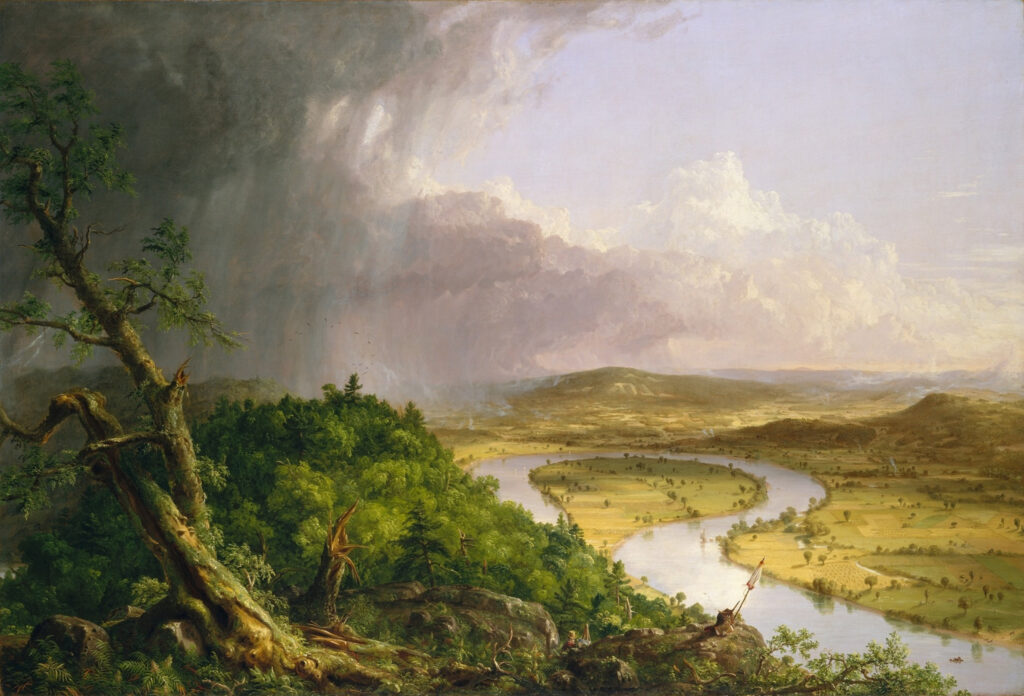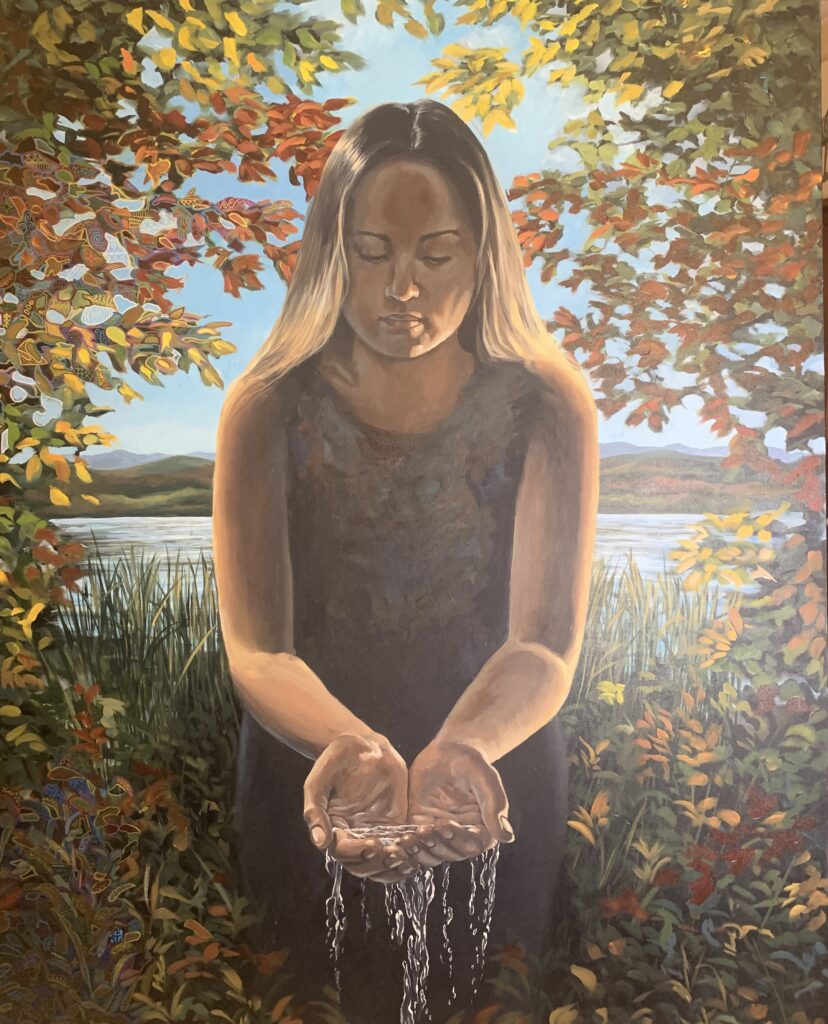By James Brangan

Art inspires appreciation, which spurs understanding that leads to positive action. In 2019, the Lake Champlain Basin Program (LCBP) established an Artist-in- Residence (AiR) grant program to help artists, students, and their audiences make those connections.
In the first year of the program, a grant supported the Friends of the Winooski River, who brought artists into local schools for students of all ages to learn about the Basin and interpret what they have learned through the arts. The following year, BluSeed Studios in Saranac Lake, New York recruited six artists — including three from the Mohawk Community — who worked with an environmental science professor from Paul Smiths College. The artists developed an in-depth understanding of the issues facing the Lake Champlain Basin and interpreted those issues through paintings, multimedia with ceramics, paper and fiber arts and poetry.
Art makes a difference in our lives. Music compels us to dance and sing. Theater and films can make us cry or roll with laughter. Writing informs and entertains us. Visual arts make us think. Humans have an innate need to create. Cave paintings featuring successful hunts and sculpted figurines honoring deities date back 40,000 years.
Art has also greatly influenced the conservation movement in North America, which goes back only 200 years. Key conservationists used visual and written forms of art to express their concerns. Writer James Fennimore Cooper warned against the overhunting of passenger pigeons — once so plentiful that their flocks blacked out the sun for days — in his novel “The Pioneers” in 1823. Four years later, John James Audubon wrote of the eradication of the Carolina parrot, which once ranged from Florida to Long Island and as far west as Colorado: “Our Parakeets are very rapidly diminishing in number; and in some districts, where twenty-five years ago they were plentiful, scarcely any are now to be seen.”
Unfortunately, the last passenger pigeon died in a cage at the Cincinnati Zoo in 1914; the last Carolina parrot died in the same cage there four years later. However, Audubon’s early paintings helped Americans better appreciate the diversity of birds in North America. While Audubon was developing his signature work between 1827-1839, “Birds of North America,” the artists from the Hudson River School of painting were interpreting American landscapes in ways that were never seen before.
Living in the age of modern media where viewers can watch events happen in real time or view the world’s greatest works of art in an instant, it is hard to imagine a time when Americans did not have access to images of the natural world. Newspapers began to include some crude wood engravings in the 1830s, but the first truly illustrated newspaper started in 1855. Zoos did not exist in the country in the early 19th century, until the first opened in Philadelphia, Pennsylvania, in 1874. The oldest public art museum in the U.S., the Wadsworth Atheneum Museum of Art in Hartford, Connecticut, opened in 1844.

Amateur landscape artist and architect Daniel Wadsworth was a patron of Thomas Cole, the founder of the Hudson River School. The paintings the school members produced are credited with changing Americans’ perceptions about nature and building support for the early conservation movement. It is also well documented that Abraham Lincoln’s decision to preserve the land that is now Yosemite National Park in 1864 of the area’s wonders by Thomas Ayres.
Yellowstone National Park has a similar history. For decades, Americans believed that the description of the geysers, bubbling mudpots, steaming rivers, and plunging waterfalls — all set in an unbelievable palette of colors — were simply tall tales by mountain men who had a reputation for embellishment. The June 1871 edition of Scribner’s Monthly: An Illustrated Magazine for the People changed that perception. The publication included sketches of some of the geological features in Yellowstone country, which inspired painter Thomas Moran and photographer William Henry Jackson to join a United States Geological Survey expedition to the region later that year. Their art inspired the United States Congress and President Ulysses S. Grant to designate Yellowstone as the first national park in 1872.
Art continued to play a role in the conservation movement well beyond the establishment of the National Park Service in 1916, which was tasked with protecting the scenery and wildlife in these designated federal lands. In addition to inspiring Americans to conserve their special places, art had a significant part in other important movements. For example, song played a vital role in the Suffrage Movement that got women the right to vote in 1920. The photographs of young children toiling in factories and farms taken by social reformers Jacob Riis, Florence Kelley, and Lewis Hine propelled new child labor laws in the early 20th century. Music played a role in ending the Vietnam War. Fiber arts helped better interpret the impacts of HIV when the massive AIDS quilt was displayed on the National Mall and across the country.

The LCBP continues to take inspiration from this rich history of using creative expression in the arts to inform and engage with local communities about the environment and its natural heritage. Three new LCBP AiR projects are underway this year. Over the next few months, musicians will work with scientists to make music from water monitoring data, interpret the impacts of dams using a floating structure, and explore the African American experience in the Champlain Valley using hip-hop and fiber arts.
The LCBP will issue another request for AiR proposals later this year, so art will continue to make a difference in building that essential connection from appreciation and stewardship of our natural and cultural resources.
This article was originally published in the Fall 2023 edition of Interstate Waters magazine. James Brangan is a NEIWPCC information officer and Champlain Valley National Heritage partnership coordinator.